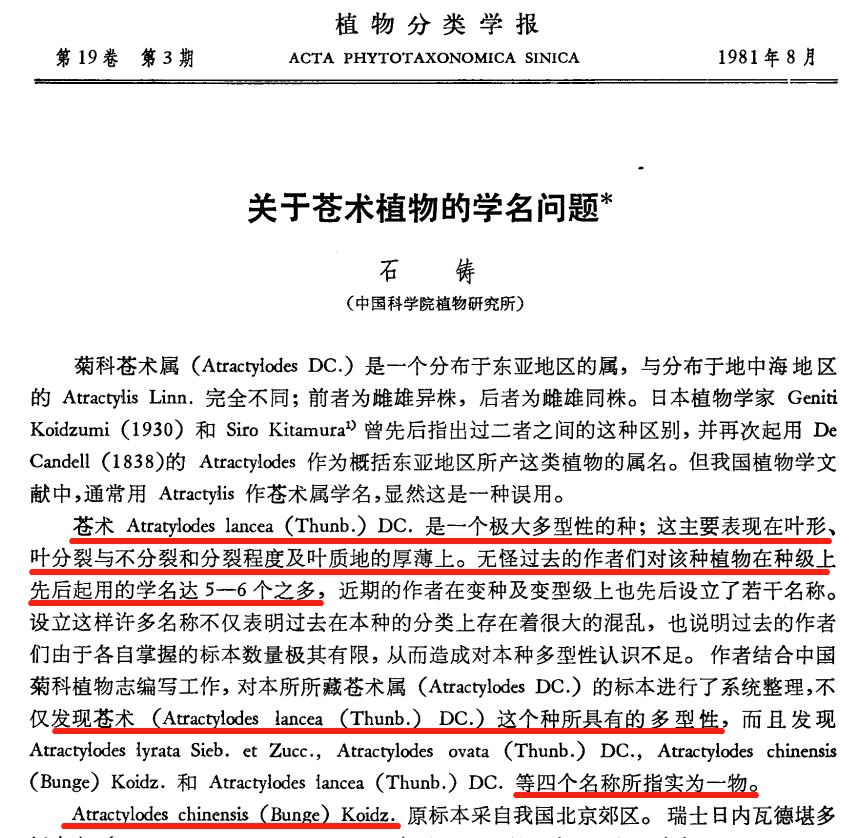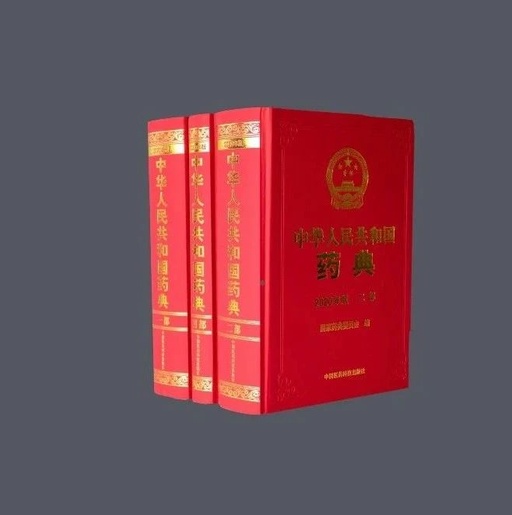Author: Zhou Jianli Source: Dandelion
Cangzhu (Atractylodes lancea) is a medicinal material whose origin has not been clearly defined in the pharmacopoeia.
This has deep historical reasons. It involves some predecessors, most of whom are no longer alive, and it is not appropriate to speak too much about them; however, this issue cannot be ignored. I will only discuss the problem without involving specific individuals in the industry.
History can be revisited, but the problem must be solved.
First, let’s look at Cangzhu in the pharmacopoeia. The inclusion of Cangzhu in the pharmacopoeia predates the publication of the plant classification for the Asteraceae family. At that time, the main reference book was a “Guide to Higher Plants,” which, according to plant taxonomists, is quite incomplete. The earlier 1963 edition of the pharmacopoeia could only refer to the “Handbook of Seed Plants in Southern Jiangsu,” which classified Cangzhu as the Cangzhu from the Mao Mountain in Southern Jiangsu, named Atractylodes lancea. Later, another name was given to the Northern Cangzhu, Atractylodes chinensis, claiming it to be the authentic medicinal Cangzhu. This led to disputes. Is the Southern variety the authentic one, or is it the Northern one? It is said that a fierce debate ensued between the Southern and Northern factions (I must clarify that this is hearsay, as I was just in elementary school at that time).
The academic community back then was completely different from now; differing opinions were openly discussed, often leading to heated arguments. The final result of these disputes was a compromise: neither the Southern nor the Northern varieties were used as the Chinese scientific name; the Northern variety was called Bei Cangzhu (Northern Cangzhu) and the Southern variety was called Mao Cangzhu (Mao Cangzhu), which has been included in the pharmacopoeia to this day.
After this, the leading expert in plant taxonomy, Shi Zhu, made a definitive statement (see the attached document).
He merged multiple species of Cangzhu recognized by various taxonomists into one. This included assigning the Latin name based on the principle of priority, collectively referring to both “Mao Cangzhu” and “Bei Cangzhu” simply as “Cangzhu” (Cangzhu Atractylodes lancea). This includes the Latin name Atractylodes chinensis, which was published from 1930 until the 1975 edition of the “Guide to Higher Plants in China,” but this name was not included in the Flora of China.
Mr. Shi Zhu’s article was published in 1981 in the Journal of Plant Taxonomy, which may not have attracted the attention of the Chinese medicine community, but the Flora of China published in 1987 fully accepted Mr. Shi’s viewpoint. This sparked some debate in the Chinese medicine community at the time, with some experts believing that these matters required further in-depth research and that the pharmacopoeia should not be easily altered, thus it was retained. (I must clarify that this is hearsay, as I was just a junior lecturer at a local university at that time).
I have heard plant taxonomy experts say that the names “Mao Cangzhu” and “Bei Cangzhu” have never been recognized in the field of plant taxonomy.
This serious inconsistency between the national pharmacopoeia and the Flora of China has caused considerable trouble for subsequent research. To be honest, this is really not rigorous!
Predecessors said that careful research was needed, which was based on the circumstances at that time. Over the years, has the National Pharmacopoeia Commission considered this issue? Has it conducted thorough research on this problem? How long do you intend to postpone this lack of rigor until the next edition of the pharmacopoeia?
Finally, I must reiterate that the above is all hearsay, as I am not involved in the discussion of these issues.
(This serious inconsistency between the national pharmacopoeia and the Flora of China, two core documents, exists in many places in the pharmacopoeia. The National Pharmacopoeia Commission should organize experts to conduct a large-scale review of the entire 20th edition, identifying and resolving each issue one by one.)
Attached Information —

Flora

Pharmacopoeia
Cangzhu
Cangzhu
ATRACTYLODIS RHIZOMA
This product is the dried rhizome of the Asteraceae plant Cangzhu Atractylodes lancea (Thunb.) DC. or Bei Cangzhu Atractylodes chinensis (DC.) Koidz. Harvested in spring and autumn, cleaned of soil, dried, and the fibrous roots removed.
[Characteristics] Mao Cangzhu is irregularly bead-like or nodule-shaped cylindrical, slightly curved, occasionally branched, 3-10 cm long, and 1-2 cm in diameter. The surface is gray-brown, with wrinkles, transverse grooves, and residual fibrous roots, with the top having stem scars or residual stem bases. The texture is solid, with a cross-section that is yellow-white or gray-white, scattered with numerous orange-yellow or brown-red oil chambers, which can yield white needle-like crystals upon prolonged exposure. It has a distinctive fragrance, with a slightly sweet, spicy, and bitter taste.
Bei Cangzhu is in a lump-like or nodule-shaped cylindrical form, 4-9 cm long and 1-2 cm in diameter. The surface is black-brown, turning yellow-brown when the outer skin is removed. The texture is relatively loose, with a cross-section scattered with yellow-brown oil chambers. The aroma is milder, with a spicy and bitter taste.


